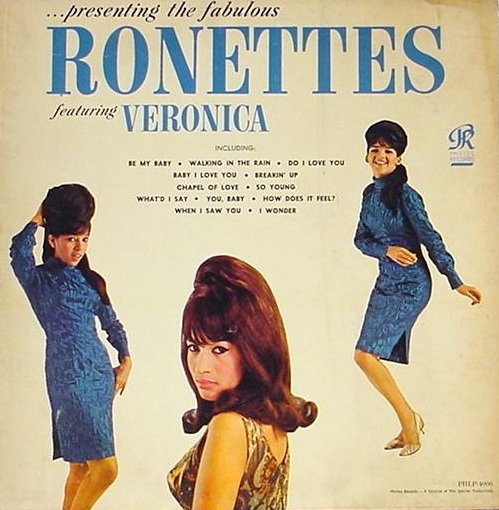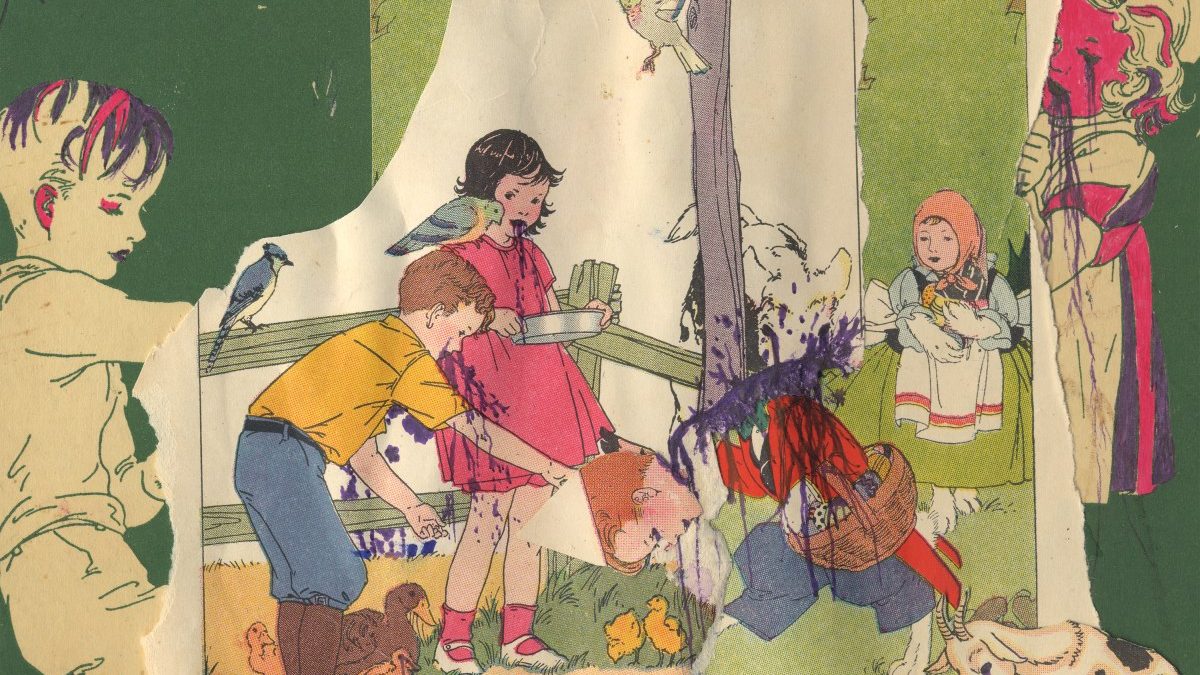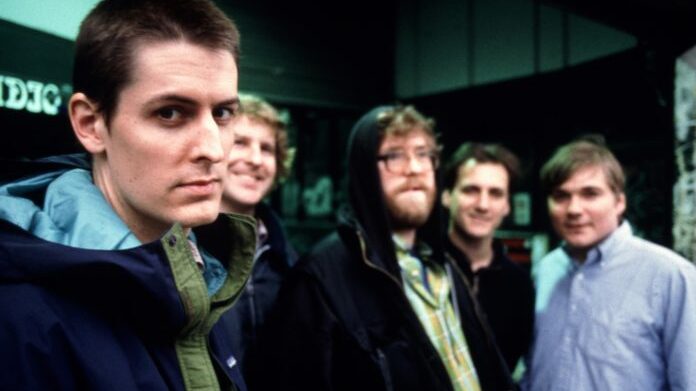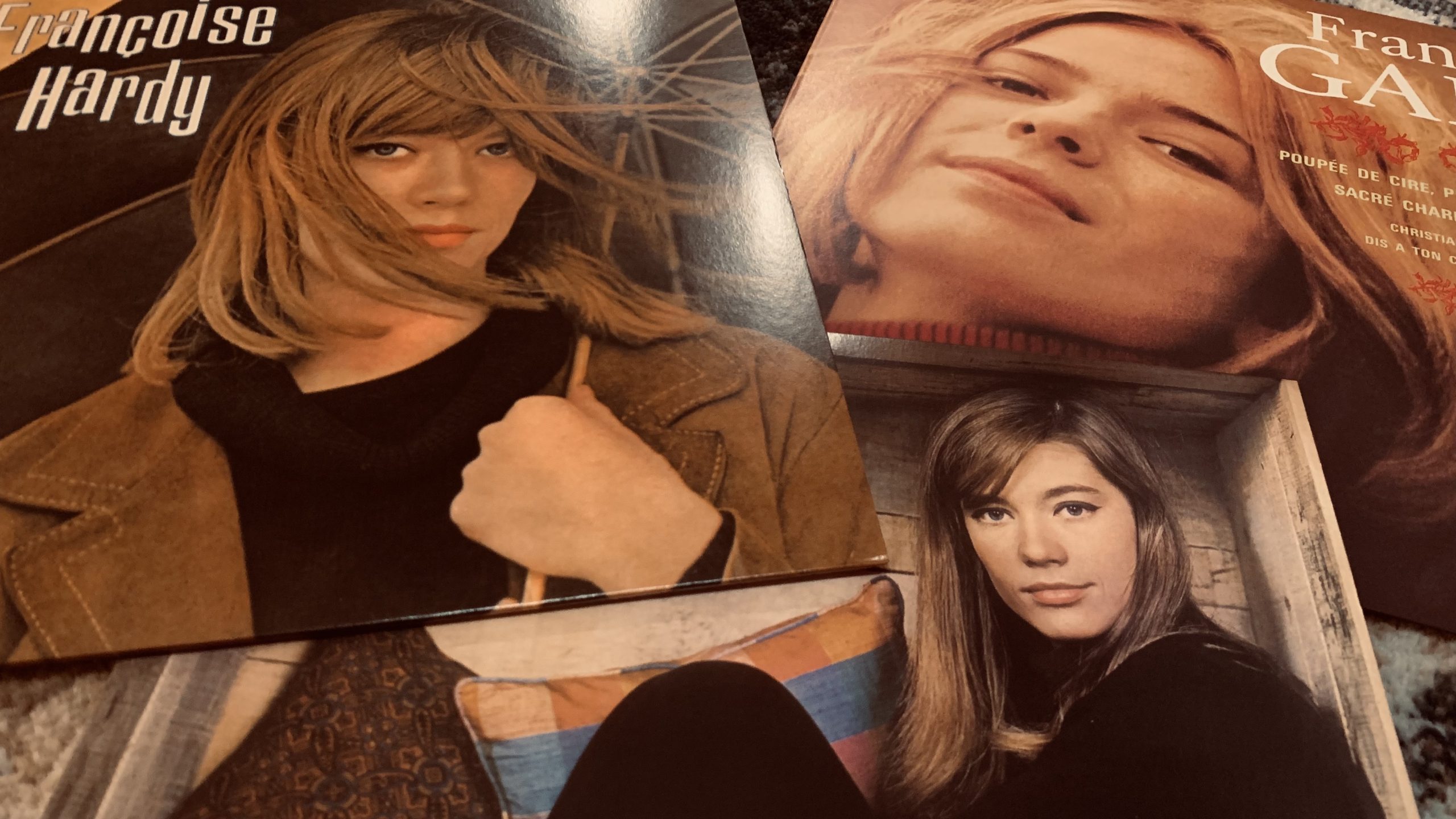
The Ronettes’ first, and only, album is frequently hailed as the greatest of all “girl group” records, but needless qualifiers aside, it’s nothing short of a pop masterpiece – one with dark undercurrents lurking just beneath its instantly-lovable melodies and arrangements.
You know those crazy movie theories that blow your mind and ruin all future viewings? Like in the lighthearted coming home for the holidays comedy, Planes Trains and Automobiles, when someone asked “What’s in the box?” You were forced to reconsider the entire film with the pretense of John Candy lugging around a trunk containing the remains of his dead wife. The feel-good film is now forever tinted through the macabre filter. That’s how I feel about the fantastic 1964 album, Presenting the Fabulous Ronettes Featuring Veronica.
You probably know the album already – at least, I’d argue that you should, anyway. At least you know of it, because it contains the iconic track, “Be My Baby.” It’s effectively a “greatest hits” album composed of studio singles, recorded over the course of a year and presented as a cohesive whole. You’ll find it atop many “girl group” lists as the defining album of the genre, and it is borderline impossible to listen to the album of pop hit after sunshiny pop hit without smiling. However, the record transcends even higher heights when you peel the layers of the backstory and reconsider it as… a concept album.
A BEAUTIFUL DARK TWISTED FANTASY
Much has been said about Phil Spector – the producer whose “Wall of Sound” production laid the groundwork for The Ronettes’ one and only album; and by “much,” I mean how abusive and manipulative the guy was. This is the man who built a gold coffin with a glass top, placed it in his basement, and threatened to kill his wife and display her body to the public if she ever left him. Perhaps you’ve heard stories of him taking away his wife’s shoes so she couldn’t escape, or how he forced her to drive around town with a life-size doll of himself, on the rare occasions that he allowed her out of the house at all. “Abusive” is an understatement, but in 2003, Spector escalated his status from “abusive partner” to “murderer,” when he shot and killed actress Lana Clarkson.
Certainly the moniker of “mad genius” has also been applied to Spector – with his reputation as an influential record producer who pioneered an era and sound that stretched to The Beatles, Leonard Cohen, and even The Ramones – and while yes, Spector’s musical prowess certainly shines in the debut album by The Ronettes, in terms of the record in question as an accidental concept album, Spector plays the role of the villain and tormentor to the victim, hero, and ultimate champion: Veronica “Ronnie” Bennett.
That’s right. I said “Ronnie Bennett.” How is it that the lady is married to Phil Spector for four years, and yet her identity is forever linked to him as “Ronnie Spector.” That’s messed up. Why does the conversation around The Ronettes’ lone album typically begin and end with Phil Spector? Instead, let’s reframe this review a bit, and consider the album from the perspective of the hero. Let’s actually feature the “Veronica” promised on the album cover.
FROM SPANISH HARLEM TO THE L.A. STUDIO
Part of the beauty of this album – and the story of The Ronettes in general – is the magnetism of Ronnie’s personality. While her older sister Estelle Bennet and cousin Nedra Ross round out the trio, it’s really about Ronnie. There is something about her vocals that pierce through the “Wall of Sound,” and while there’s a sheen that seems to follow the girl group genre in general, there’s an authenticity and familiarity that the girl from Spanish Harlem brings. While it’s decidedly an L.A. studio album, with layers of reverb-swathed instrumentation, there’s a sweet innocence to Ronnie’s vocals that also allude to a depth just under the surface.
That’s why this album begs to be reconsidered as more than just a collection of singles featuring Spector’s studio trickery. What if, instead, we reframe the album through the lens of our protagonist, Veronica, perhaps a symbol of adolescence, trying to find her way? As with all journeys, heroes are met with villains. I know it’s a bit cliché, but come on; how can you not paint Spector as the villain? Let’s embrace it, shall we?
The story opens with our heroine “Walking in the Rain.” The storm clouds of the opening track foreshadow the darkness looming over the journey ahead. Veronica laments through the downpour, “wishing and hoping and praying” for… something. We even have these wedding bells, alluding to the eminent pursuit of our villain. Too much? Let’s keep going.
The next track, “Do I Love You?,” has Veronica pondering if she should or shouldn’t; and then we are stuck shouting into the speakers, “NO! Girl, run away!” It’s like a horror film, as Veronica sings the Spector-penned words. It’s almost as if you can hear Ronnie’s voice questioning, and Spector’s coaxing response, willing her to reply, “Yes, I love you.” Creepy. And it gets worse.
Track three reminds us of our heroine’s predicament: she is “So Young.” In the tune, she’s upset that she’s too young to get married, and when you remember Spector is tugging all the production strings, it’s especially unnerving. Here, it’s as though Spector is a predator, grooming and waiting to pounce. Our concept album is a story of obsession, abuse, and manipulation, but it’s also about innocence and young love, and the lines are often blurred between the voices of the victim and the abuser.
By the end of the A-side, we’re met with the live-feeling performance of Ray Charles’ “What’d I Say.” While it’s somewhat disjointed from the rest of the album production-wise, and easily dismissed as “filler,” it also provides a moment to step back and recall the journey of these Ronettes as performers. In case you hadn’t noticed, Ronnie can light up a room. Here’s a track that reminds us that The Ronettes were a powerhouse entertainment machine, capable of delivering show-stopping performances. After all, The Beatles invited them on tour, and The Rolling Stones even opened for the group at one point. Yup; that’s the kind of potential and greatness on the horizon.
Just when you get a glimpse of the possible future, we get the crown jewel of the album as track one of the B-side: “Be My Baby.” It’s pop gold. Period. Yet, even with all the potential and glory our heroine possesses, Veronica is still caught in the tractor beam of our villain’s possessive grips, as his voice seems to hypnotically loom through the recording, demanding: “Be My Baby.”
“You, Baby” and “Baby, I Love You” feature Ronnie’s piercing vocals swimming on a bed of reverb, in a way that shows how perfect her voice breaks through the orchestrated soup of Spector’s “Wall of Sound” production – perhaps a metaphor for both her strength and his domineering presence.
The themes of obsession and possession come to a head with the album’s closing track. While The Dixie Cups provided the quintessential recording of “Chapel of Love” in 1964, the song was originally written with Darlene Love in mind. Phil Spector, however, didn’t like Love’s recording, so he shelved it. Spector flexes this kind of power throughout Ronnie’s life, withholding opportunity on a whim. For example, when The Ronettes were invited to tour Europe with The Beatles, Spector sent Estelle and Nedra ahead and kept Ronnie home.
It’s as if our heroine’s journey of discovery and promise ends at the “Chapel of Love.” The wedding bells presaged in the opening track return, and Veronica is whisked away in the finale of the story that we’ve reimagined. That’s what happens with youthful innocence, isn’t it? With all the hope and aspiration, we are often met instead with the oppressive darkness of power structures and institutions. Okay, I’ll stop there. This is starting to sound a bit too much like something a college sophomore might rant about.
I’ll leave you with this happy ending, though. For while our heroine, Veronica “Ronnie” Bennett is left chained to Phil Spector’s oppressive grips, she ultimately breaks free. Literally. She breaks out of Spector’s compound barefoot – since he kept her shoes from her – and ran away from their marriage after four years. And while Spector’s iron fist in the music industry kept The Ronettes out of the Rock & Roll Hall of Fame – presumably under his vindictive insistence – they were ultimately inducted in 2007, while Spector was standing trial for murder. Yeah; and the dude died in prison of COVID, so, there are happy endings after all.




1 thought on “The Ronettes – Presenting the Fabulous Ronettes Featuring Veronica”